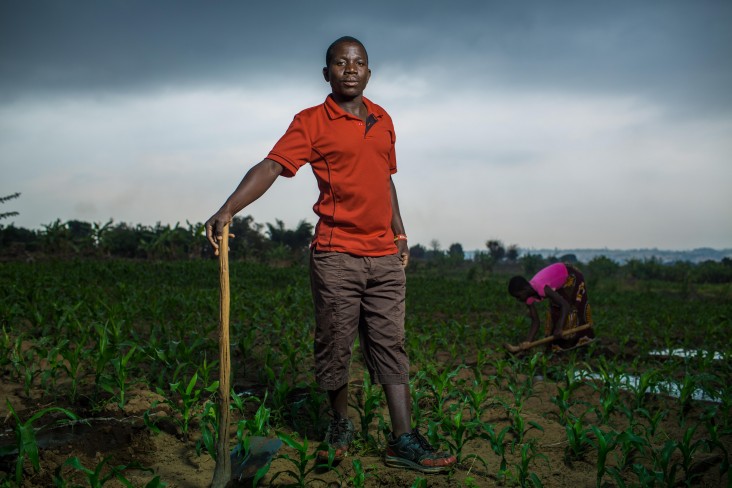
Hunger, malnutrition and disease continued to mount in Malawi during the worst drought in decades. More than 6.7 million people faced food shortages, and possibly starvation, without ongoing humanitarian assistance.
But the situation was not as dire for Mitawa Village Community, thanks to a USAID irrigation project that has helped residents divert spring water to their fields through a 1.5-kilometer irrigation channel. The waterway leads to a series of narrow dirt- and stone-lined channels that irrigate fields before spilling into a fish pond providing much-needed protein for the community.
While impressive, the watershed and irrigation projects are not the most notable elements of the community’s success. Many watershed projects are launched, but not all thrive once funding ends. In the case of Mitawa Village Community, funding stopped in 2014, but the 4,774 families continued to maintain the watershed with skill and enthusiasm, and today are reaping the benefits. What makes this project different?
The answer lies with the community’s watershed and irrigation committees, groups of women and men who are responsible for the watershed and irrigation systems’ maintenance. They recognize that numerous factors contribute to the project’s success, notably the community’s ongoing involvement.
To support the community during the construction of the irrigation project, USAID funding provided Wilfred Charles and the other workers with food assistance: 15 kg of pinto beans and four liters of vegetable oil for every 20 days worked. It was Wilfred Charles’ commitment that has sustained the watershed project.
The watershed project, launched six years ago by USAID to battle soil erosion and improve food security, has raised the community’s water table. It uses 861 massive trenches to collect rainwater that would otherwise flow away during the rainy season. The channels and trenches were dug by six Mitawa residents over a three-year period.
In 2013, when water began trickling through their fields, villagers said it was a dream come true. As a result of the irrigation system, they have been able to grow more food with less water.
"If the six men did not show up, the whole community would now be facing hunger and our children would be malnourished. Now, we are confident because we have water. People are happily cultivating. Many have built houses through that and have started to thank us," says Wilfred.
“Now I can see the future for my kids is bright,” says Wilfred. His eldest daughter, Joyce Wilfred, goes to school just up the road.
He says, “This community means a lot to me because at first we thought we cannot do anything. But now we are able to do things that we are proud of.”
Their long-term association with USAID’s partners, especially Catholic Relief Services and Emmanuel International, built trust and confidence in the projects years ago and provided villagers with the technical and organizational skills needed to make the watershed their own.
This ownership, combined with the benefits brought about by a village health clinic, school and years of Peace Corps volunteer assistance, spared Mitawa Village Community from the worst of the drought.
Residents are more resilient and resourceful than neighboring communities due to lessons learned when the original project was funded. The extraordinary success of this initiative demonstrates that long-term, community-based, integrated projects can be sustainable.
More importantly, the sustainability of the Mitawa Village Community watershed and irrigation projects can be applied to future humanitarian efforts, not only fulfilling USAID’s goal of improving Malawians’ quality of life during the life of projects, but also to sustain their improved livelihoods and build self-reliance in all communities we serve.







Comment
Make a general inquiry or suggest an improvement.